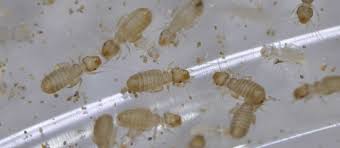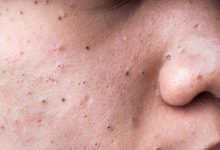Exosomes Treatment for Hair Restoration: How It Works and What to Expect

Hair loss is a common concern that affects millions of people around the world, leading to a significant impact on self-esteem and confidence. While various treatments are available, Exosomes treatment is emerging as a promising option for hair restoration. This innovative therapy leverages the regenerative properties of exosomes, which are tiny extracellular vesicles that facilitate communication between cells, to stimulate hair growth and enhance follicle health. In this article, we will explore how exosomes treatment works for hair restoration, what to expect during the procedure, and the benefits it offers.
Understanding Hair Loss
Before delving into exosomes treatment, it’s essential to understand the causes of hair loss. Several factors contribute to hair thinning and balding, including:
- Genetics: Male and female pattern baldness, or androgenetic alopecia, is primarily hereditary and can begin at an early age.
- Hormonal Changes: Hormonal fluctuations due to pregnancy, menopause, or thyroid disorders can lead to hair thinning.
- Nutritional Deficiencies: Lack of essential nutrients, such as vitamins, minerals, and proteins, can negatively affect hair health.
- Stress and Lifestyle Factors: Chronic stress, smoking, and poor lifestyle choices can contribute to hair loss.
- Medical Conditions: Conditions like alopecia areata, scalp infections, and autoimmune diseases can cause significant hair loss.
Understanding the underlying causes of hair loss is crucial in determining the most effective treatment approach, and this is where exosomes treatment can play a vital role.
What Are Exosomes?
Exosomes are small membrane-bound vesicles secreted by various types of cells, including stem cells. They contain a wealth of biological information, including proteins, lipids, and genetic material. Exosomes facilitate intercellular communication, playing a critical role in cellular processes such as tissue repair, inflammation modulation, and regeneration.
In the context of hair restoration, exosomes derived from stem cells are particularly valuable. They are rich in growth factors and signaling molecules that promote hair follicle health and stimulate the growth of new hair. By harnessing the regenerative properties of exosomes, practitioners can develop effective treatment protocols for hair loss.
How Exosomes Treatment Works for Hair Restoration
Harvesting Exosomes
The first step in exosomes treatment is the extraction of stem cells from a suitable source, such as adipose (fat) tissue or bone marrow. Once the stem cells are obtained, they are cultured in a controlled laboratory environment. As these cells proliferate, they naturally release exosomes into the surrounding media.
Processing and Purification
After a specific period of culture, the exosomes are isolated and purified from the culture media. This process ensures that only the highest quality exosomes, rich in growth factors and healing properties, are used for the treatment.
Injection into the Scalp
Once the exosomes are prepared, they are injected into the scalp at the targeted areas where hair loss has occurred. The procedure typically involves the use of a fine needle to deliver the exosomes directly to the hair follicles. Practitioners may combine this treatment with other techniques, such as microneedling, to enhance the absorption and effectiveness of the exosomes.
Activation of Hair Follicles
Once injected, the exosomes stimulate the hair follicles by delivering vital growth factors and signaling molecules. These components encourage the proliferation of hair follicle cells, increase blood circulation to the scalp, and reduce inflammation. As a result, dormant hair follicles can be reactivated, promoting the growth of new, healthy hair.
Continuous Improvement
The effects of exosomes treatment typically manifest over several weeks to months. As the hair follicles respond to the treatment, patients may notice increased hair density, improved texture, and enhanced overall scalp health. The regenerative processes initiated by the exosomes continue to support hair growth, leading to long-lasting results.
What to Expect During the Treatment
Consultation
Before undergoing exosomes treatment for hair restoration, patients typically have a consultation with a qualified practitioner. During this appointment, the practitioner will evaluate the patient’s hair loss condition, discuss medical history, and determine whether exosomes treatment is appropriate. Patients should feel free to ask questions and express any concerns they may have.
The Procedure
Exosomes treatment is an outpatient procedure that usually lasts about 30 to 60 minutes. Here’s what to expect during the treatment:
- Preparation: The scalp may be cleaned, and a local anesthetic may be applied to minimize discomfort during the injections.
- Injection: Using a fine needle, the practitioner will inject the exosomes into the targeted areas of the scalp. Multiple injections may be necessary, depending on the extent of hair loss.
- Post-Treatment Care: After the injections, patients can resume their daily activities, although it’s advisable to avoid vigorous exercise or excessive sweating for a short period.
Recovery
One of the significant advantages of exosomes treatment is the minimal downtime involved. Most patients experience mild redness or swelling at the injection sites, which typically resolves within a few hours. As hair growth begins, patients can expect gradual improvements over the following months.
Benefits of Exosomes Treatment for Hair Restoration
Non-Invasive
Exosomes treatment is a minimally invasive procedure that does not require surgery or extensive recovery time. Patients can return to their normal activities shortly after the treatment.
Natural Results
Because exosomes are derived from the body’s own cells, the results are natural-looking and harmonious. Patients can achieve improved hair density without the unnatural appearance sometimes associated with other treatments.
Safety Profile
Exosomes treatment has a favorable safety profile. Since exosomes are derived from human cells, the risk of rejection or severe side effects is minimal. Patients typically experience only mild discomfort and transient side effects.
Enhanced Hair Quality
In addition to stimulating new hair growth, exosomes treatment can improve the overall quality of existing hair. Patients often report thicker, shinier, and healthier hair following the treatment.
Versatile Applications
Exosomes treatment can be effective for various types of hair loss, including androgenetic alopecia, alopecia areata, and post-surgical hair loss. Its versatility makes it suitable for a wide range of patients.
Long-Lasting Results
The effects of exosomes treatment can last for several months, and ongoing treatments can help maintain and enhance the results. Many patients find that their hair continues to improve even after the initial treatment.
Personalized Treatment Plans
Each patient’s hair loss condition is unique, allowing practitioners to create customized treatment plans tailored to individual needs. This personalized approach increases the likelihood of successful outcomes.
Conclusion
Exosomes treatment is revolutionizing hair restoration, offering a safe, effective, and minimally invasive option for individuals struggling with hair loss. By harnessing the regenerative properties of exosomes, patients can experience improved hair growth, enhanced follicle health, and natural-looking results.
As research continues to unfold, Exosomes treatment is poised to become an integral part of aesthetic medicine, providing hope for those seeking to restore their hair and regain their confidence. If you’re considering exosomes treatment for hair restoration, consult with a qualified practitioner to explore your options and determine the best approach for your unique situation. With the right treatment, achieving thicker, healthier hair is within reach.









